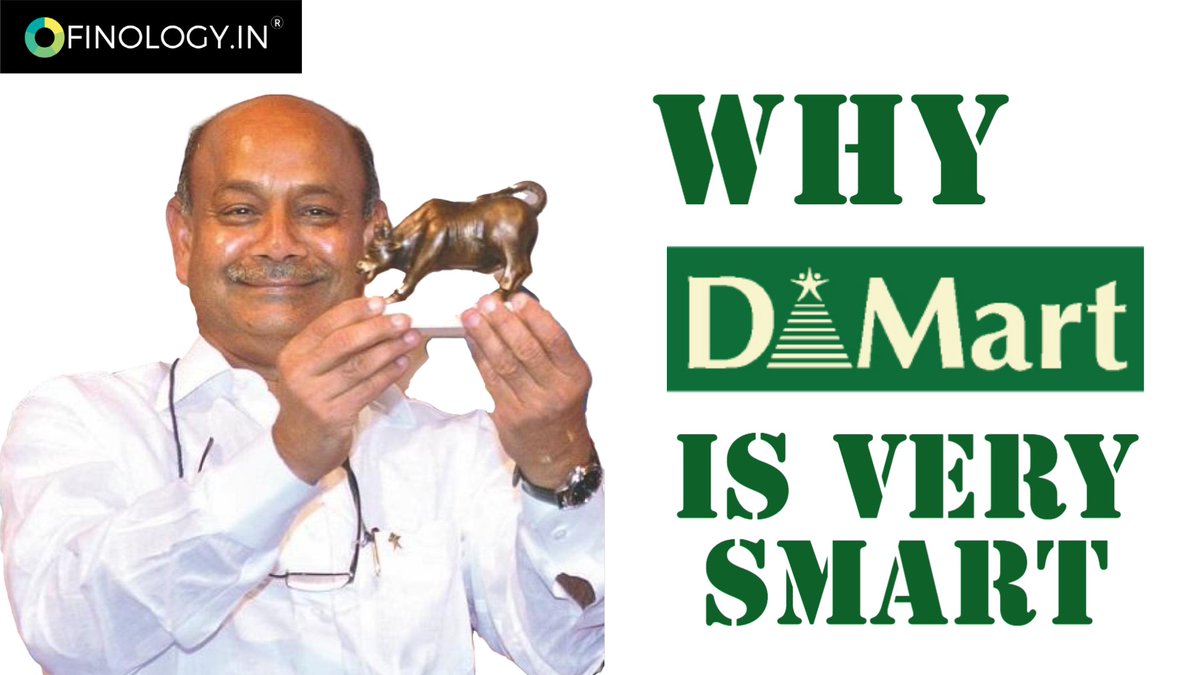
We all have wondered how DMART gives us such heavy discounts. Do you think Radhakishan Damani, the 4th richest man in India would do something unviable? How is DMART different from others?
This thread will clear all your doubts! (1/10)
#financewithfinology #StockMarket #invest
This thread will clear all your doubts! (1/10)
#financewithfinology #StockMarket #invest

DMART’s business model (2/10)
Operates on a B2C (Business to Consumer) model, where goods are directly sold from the manufacturers to the end-user. It is focused on high inventory turnover and chooses high demand products that are readily available at low-cost margins.
Operates on a B2C (Business to Consumer) model, where goods are directly sold from the manufacturers to the end-user. It is focused on high inventory turnover and chooses high demand products that are readily available at low-cost margins.
REVENUE MODEL (3/10)
SLOTTING FEES
A payment made by the manufacturer of goods to the superstore to keep its products on the shelf for sale. Also known as an entry fee for the products.
SLOTTING FEES
A payment made by the manufacturer of goods to the superstore to keep its products on the shelf for sale. Also known as an entry fee for the products.
(4/10)
The store attracts high volumes of customers, making it an attractive and opportunistic place for the manufacturers to keep their products. More manufactures mean more income from entry fees.
The store attracts high volumes of customers, making it an attractive and opportunistic place for the manufacturers to keep their products. More manufactures mean more income from entry fees.
LOW EXPENSES (5/10)
DMart operates on a low-interior-cost concept, where it has tried to reduce its operational expenses. You would never see flashy DMART stores, they keep it simple and low-cost maintenance.
DMart operates on a low-interior-cost concept, where it has tried to reduce its operational expenses. You would never see flashy DMART stores, they keep it simple and low-cost maintenance.
LOW PURCHASE PRICE OF PRODUCTS (6/10)
DMART returns payment to the manufacturers for the goods purchased in quite less time than any other retail operators, which allows them to avail massive cash discounts, thereby cutting the purchase price.
DMART returns payment to the manufacturers for the goods purchased in quite less time than any other retail operators, which allows them to avail massive cash discounts, thereby cutting the purchase price.
HIGH VOLUME SALES (7/10)
This is quite simple.
LOW COST = HIGH FOOTFALL = HIGH SALES VOLUMES = MORE DISCOUNT FROM MANUFACTURERS
This is quite simple.
LOW COST = HIGH FOOTFALL = HIGH SALES VOLUMES = MORE DISCOUNT FROM MANUFACTURERS
REGIONAL GOODS (8/10)
To cut the competition from general kirana stores, DMART pooled the popular local brands of a particular region in one place, making it more convenient for the buyers to avoid going to the local Kirana shops.
To cut the competition from general kirana stores, DMART pooled the popular local brands of a particular region in one place, making it more convenient for the buyers to avoid going to the local Kirana shops.
SELF OWNED STORES (9/10)
The Company operates in self-owned stores, which allows it to be a low or no debt company, making it financially stronger. Also, no rental cost helps in high positive cash flows.
The Company operates in self-owned stores, which allows it to be a low or no debt company, making it financially stronger. Also, no rental cost helps in high positive cash flows.
(10/10)
Do you think the entry of online retailers can disrupt the market share of companies like DMART?
Do you think the entry of online retailers can disrupt the market share of companies like DMART?
• • •
Missing some Tweet in this thread? You can try to
force a refresh




